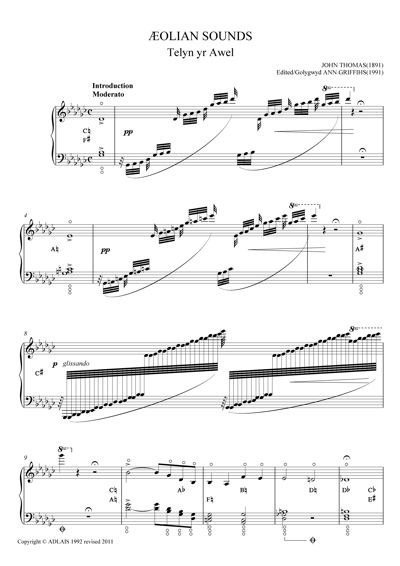 |
|||
| |
of Harp Music |
| © 2004-2025 ADLAIS |
| Aeolian
Sounds John Thomas Pencerdd Gwalia (1826-1913) |
return to previous page |
 |
Work: | Single work for solo harp |
| Catalogue No: | Adlais 043 | |
| ISMN: | 979-0-57032-198-8 | |
| Edition: | January 2012, A4 stapled | |
| Suitable for: | Grade 8, Pedal Harp | |
| Price:: | £8.00 Go to shop | |
| Examination: | LCM ALCM in Performance (2011-2015) | |
| See all Adlais Publications including transcriptions by John Thomas | ||
'Listen... 'tis the breeze upon the strings'. This was the quotation with which John Thomas, harpist to Queen Victoria, sub-titled the first edition of his Aeolian Sounds, composed in April 1891. The invention of the Aeolian harp is credited to Aeolus, the Greek god of the winds, who made an instrument which played as if touched by an unseen hand when the winds blew over the dried sinews he had stretched over a turtle shell. Legend relates, too, that the biblical King David possessed a magical harp which, suspended over his couch, sounded of its own accord in the north wind at the hour of midnight. By the early nineteenth century its sound was being described as that of Nature's Music. As known to the Victorian era, the Aeolian harp almost became a pro-requisite of the middle-class home. Consisting of a pinewood box, approximately three feet long, five inches across, and three inches deep, it had two narrow bridges of hard wood over which some twelve strings were stretched, and tuned in pairs to the most exact unisons possible. The instrument was then placed in the open sash window of the house, where the breeze brushed over its strings, causing them to vibrate and to utter their ethereal, mysterious sounds - seemingly, the music of another world. |

